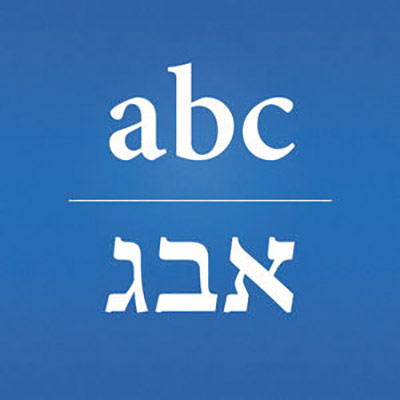
By the middle of first grade, you can see two students sitting cross-legged across from one another in our classrooms, giggling as they read a Hebrew-language book aloud. You also will find the same two students working on a literacy project in English with equivalent ease, enthusiasm and joy.
To an outsider, this appears somewhat miraculous: How is it possible that, only a few months into the school year, a bunch of 6-year-olds are reading, writing and beginning to hold conversations in two languages and on grade level?
Veteran cognitive neuroscientist Ellen Bialystok may very well have an answer. She has studied the impact of bilingualism for more than 40 years, and her research shows that people who regularly use two languages tend to perform better on executive function tasks. What’s even more fascinating is that as we learn a second language, it changes the way we think.
For example, she discovered that if you give 5- and 6-year-olds language problems to solve, those learning in two languages are able to focus on and retrieve relevant information and ignore the less important.
As it turns out, dual-language programs align perfectly with the way our brains are wired. Dr. Bialystok explains that our brains function like a general manager whose job it is to keep us focused on what is relevant, and to help us tune out other distractions. This is what enables us to hold two different ideas or concepts in our minds at one time and shift between them.
As a Jewish day school, teaching Hebrew as our second language serves as a key to unlock the ancient texts, history, values and culture that are unique to our people. But why is learning in a dual-language curriculum program important for everyone else?
In our experience, there are three reasons it is advantageous for children to acquire a second language. First, when children gain proficiency in two languages, they are able to see and understand their first language from a comparative perspective, which reflects a higher-level thinking skill. In turn, it empowers them to delve deeper into meaning and content. They make new connections, analyze and refine their language use.
Second, we see the positive impact on both sides of the curricular equation. In what some are hailing as the Fourth Industrial Revolution, defined by new technologies that will effectively merge our physical, digital and biological worlds, a second—and even third—language is not merely an asset, but critical to functioning in a hyper-connected, increasingly global society.
Third, in order to raise global citizens, we need to provide a lens, or connector, through which our children can see and understand each other.
A dual-language program helps make these connections and nurtures a profoundly positive attitude towards other languages and cultures. Students in dual-language programs are comfortable embracing diversity, interacting with people who speak other languages, and seeking out experiences beyond their immediate surroundings.
They find themselves better prepared to engage in a global society that values multiculturalism and bilingualism. And they develop a range of life skills such as time management, organization and problem solving.
Dual-language programs make for a longer, more rigorous day for students, but they also tend to produce future leaders who are self-confident and analytical and possess the necessary social-emotional IQ needed to engage in the broader world community.
By Ruth Gafni
Ruth Gafni is head of school at Solomon Schechter Day School in New Milford.









